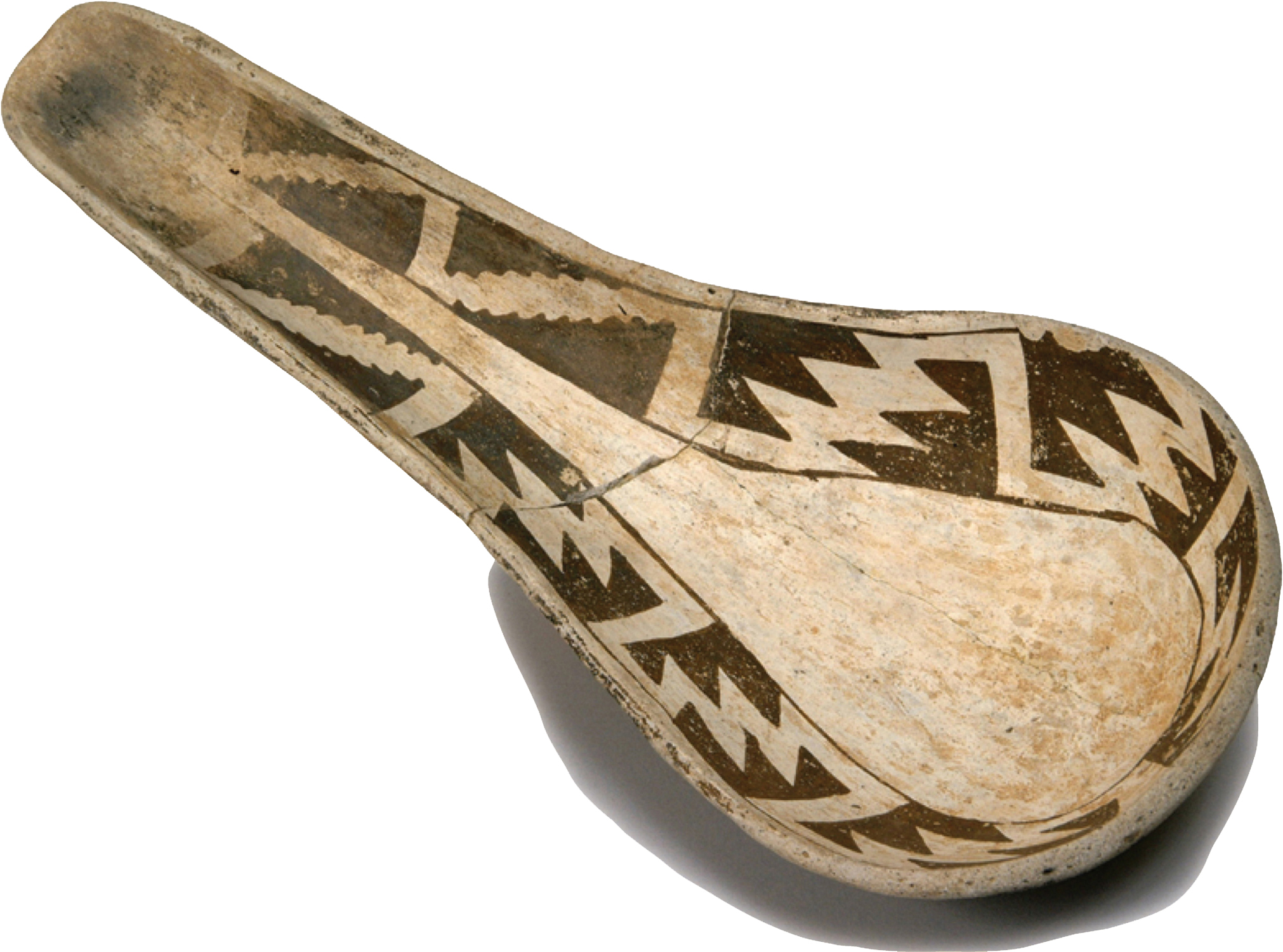Visualizing History: “Daily Life in Chaco Canyon”


About AD 1000, Pueblo Bonito stood at the center of Chacoan culture in the arid region at the intersection of present-
The exact nature of Chacoan ceremonies remains a mystery, but less mysterious are the routines of daily life that sustained the people at Pueblo Bonito for centuries. Imagine a woman setting out from the pueblo on a spring day to plant corn, the most important food crop. She might first strap on sandals, like the one shown here, woven from fibers of the yucca plant. To dig a hole for planting corn seeds, our imagined woman might use a digging stick like the one shown here, tipped by the horn of a mountain sheep, tightly bound with sinew to a sturdy cottonwood branch, and covered with animal hide to protect the binding.


Once harvested and dried, corn needed to be ground in order to be cooked and eaten. By looking at the small flat stone (the mano) and the larger stone slab (the metate) shown here, can you imagine how our Chacoan woman used these tools? Some rooms at Pueblo Bonito held numerous grinding stones like the ones shown here.
To cook the cornmeal she had ground, our imagined woman needed to mix it with water. She might use a ceramic ladle like the one shown here—


Chacoans flourished at Pueblo Bonito by using their knowledge and skills to grow and cook corn and to craft vital items such as ceramics and footwear.
SOURCES: Pueblo Bonito, Chaco Canyon, New Mexico: © Richard A. Cooke/CORBIS; sandal, mano and metate, fire starter kit, ladle, digging stick: Courtesy National Park Service, Chaco Culture National Historical Park.
Questions for Analysis
- Why might kivas have been built below ground and separated from the other rooms of the pueblo?
- What do the sandal and digging stick suggest about the interdependence of hunting and agriculture in the daily lives of Chacoans?
- Can you imagine each step in the creation of the artifacts shown here as well as the organization and scheduling of daily tasks required to use them?
Connect to the Big Idea
How does the lifestyle of Chaco Canyon society compare to indigenous societies in other regions?